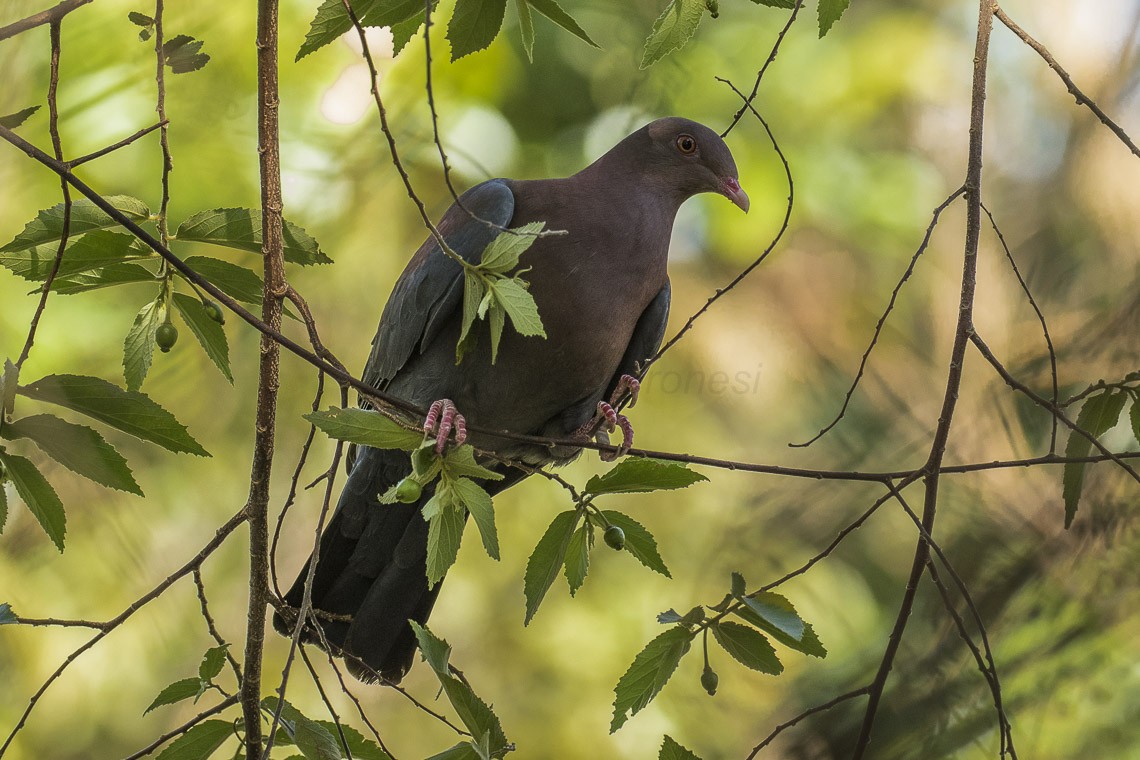Red-billed Pigeon
A species of American Pigeons Scientific name : Patagioenas flavirostris Genus : American Pigeons
Red-billed Pigeon, A species of American Pigeons
Botanical name: Patagioenas flavirostris
Genus: American Pigeons
Content
Description General Info
 Photo By Francesco Veronesi , used under CC-BY-SA-2.0 /Cropped and compressed from original
Photo By Francesco Veronesi , used under CC-BY-SA-2.0 /Cropped and compressed from original Description
Red-billed pigeons have largely dark, slate-gray plumage with a more maroon, though sometimes described as purple, head, neck, and wing coverts. They have pale red eyes with an orange orbital ring, along with a red bill with a yellow tip. Noticeably, they don't have iridescent collar plumage. A blue-gray belly and tail coverts, as well as a less brown back, distinguish it from most other species., such as the Ruddy Pigeon and Short-billed Pigeon. The only noticeable difference between males and females is that the females have a duller colored head and neck. Juveniles are often even more dull in color and have dark and dusky shoulders, as well as a more brown mantle and wings. Compared to other birds, they are a more mid-to-large sized bird, growing to be between 30-37 cm (12-15 in.) in length and a weight of 230–425 g (8.1–15.0 oz). Red-billed pigeons have a very distinctive call, described to be a long, high-pitched call consisting of a coooo followed by three cuk-c'-c'-coo notes. It follows an ascending sound. When taking off, the birds' wings create a noticeable clapping noise. 
Size
33-36 cm (13-14 in)
Nest Placement
Tree
Feeding Habits
Red-billed Pigeon mainly feed on berries, seeds, and nuts. They forage in trees and on the ground, often at dawn or dusk. These pigeons exhibit a preference for certain berries, demonstrating specialized dietary adaptions.
Habitat
Tropical deciduous forest, gallery forest, mature riparian forest, semi-open areas, thinned woodland, patches of woods, forest borders
Nest Behavior
The nest-building by red-billed Pigeon is a joint effort by both sexes. The specific timing of nest building and egg-laying is not well-documented. Parental care details for red-billed Pigeon remain largely unknown.
Nest Characteristics
Red-billed Pigeon typically chooses trees, large shrubs, or tangled vines for nest locations, between 8-30 feet above ground, favoring horizontal branch forks. The nest is a flimsy platform made of sticks with a lining of grasses and stems.
Dite type
Granivorous
General Info
Feeding Habits
Bird food type
Bird Feeder Type

Platform
Sounds
Song
Recording location: Costa Rica
Song
Recording location: Mexico
Distribution Area
Red-billed pigeons are common throughout dry forests in primarily coastal Mexico and Central America, most common in Rio Grande, though still an uncommon find during summertime. They can sometimes be found in Southern Texas, with a declining population. In almost all areas, they are rare to see during the winter. Red-tailed pigeons have four reported subspecies: restricta, W Mexico, from WC Sonora to Sinaloa (van Rossem 1930) madrensis, Tres Marías Island (off WC Mexico) (Nelson 1898) flavirostris, lower lower Rio Grande Valley in Texas through SE Sonora, Sierra Madre in Chihuahua, and San Luis Potosí S to Nicaragua and E Costa Rica (Wagler 1831) minima, lowlands of Costa Rica about Gulf of Nicoya (Carriker 1910) Habitat can vary. Red-billed pigeons are most notably in dry woods and along riverside wetland areas. 
Species Status
Not globally threatened.
Scientific Classification
Phylum
Chordates Class
Birds Order
Pigeons and doves Family
Dove Genus
American Pigeons Species
Red-billed Pigeon